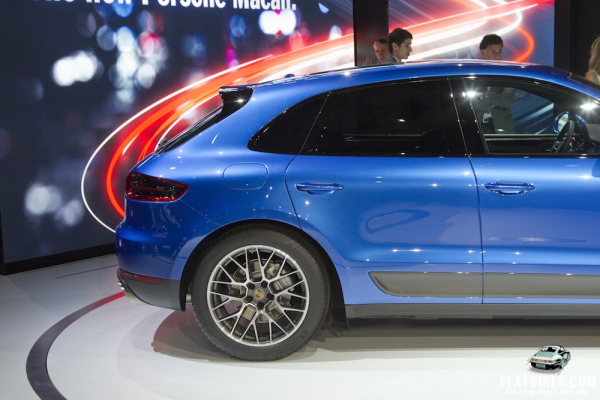Chassis
The Macan S, as it stands, is available with three separate chassis systems:
- standard steel springs
- optional steel springs with PASM and,
- air suspension with PASM
The front axle is based on a five-link design, while the rear axle makes use of a trapezoidal-link design. When equipped with steel springs, the springs and dampers are mounted in separate locations, which is primarily done for comfort, but has the added benefit increasing the load space width of the luggage compartment. Upgrading to the PASM system, which is standard on the Macan Turbo, provides the car with three programs, selectable between Comfort, Sport, and Sport+ at the press of a button.
In this market segment, no other manufacturer offers an air suspension system. Not satisfied simply with innovation, Porsche employs one of the best air suspension systems in the industry. When so equipped, the air suspension can provide vehicle leveling, height adjustment, and the aforementioned PASM settings. In standard modes, the air suspension sits .59 inches lower than the steel sprung cars, providing a lower center of gravity and slightly lower coefficient of drag, improving driving dynamics and comfort. When coupled with the “off-road” button, the air suspension will raise the car by 1.58 inches above normal, providing a maximum ground clearance of 9.06 inches.
Wheels and Tires

The Macan, like many models in the Porsche lineup, comes standard with a staggered wheel and tire package. In addition to providing an emphasis on the sportscar look of the Macan, using wheels and tires with different dimensions on the front and rear axle also serves to increase stability. Narrower tires on the front axle (235/55 R 19) allow for sportier, more precise steering input. Wider rubber on the rear axle (255/50 R 19) provides extra cornering grip, and serves to deter oversteer. In addition to these standard sizes, the Macan can be optioned with a lighter weight 18″ wheel set, or five other options in 19, 20, or 21 inch diameters. All of these wheels are fitted with TPMS sensors as standard, allowing the driver to monitor tire pressures from the 4.8″ display in the instrument cluster.
Porsche Macan Brakes

Porsche has always been known for exceptional braking capabilities, and the Macan continues that tradition. The Macan S uses 350mm brake rotors on the front, clamped by 6 piston silver painted calipers and 330mm brake rotors with single piston silver calipers in the back. The Turbo, in Porsche fashion, has even larger brakes with 360mm front rotors and red 6 piston calipers, while the rear is kept in check with 356mm rotors and single piston calipers, also in red. At the moment, no mention has been made of optional Porsche Carbon Ceramic Brakes (PCCB). The parking brake is electrically actuated, and automatically releases when the car pulls away.
Steering

The Macan uses an electromechanical power steering system similar to that found in the 991, Boxster and Cayman currently. While initially criticized as having ruined the traditional Porsche steering feel, in practice, the new power steering is still quite good. With a vehicle the weight of the Macan, electric power steering allows simple responsiveness, while also helping to save fuel. In comparison to conventional hydraulic steering systems, electro- mechanical steering saves up to 0.1 liters of fuel per 100 kilometers because the system only requires electric energy for steering, rather than being driven by belt. A new system in conjunction with the electric power steering works with the lane departure system, allowing the car to make active steering interventions when necessary.
Other Porsche Blog Posts You Will Enjoy
2014 Porsche Macan Design Focus
2014 Porsche Macan Engine and Drivetrain
2014 Porsche Macan Technical Specifications and Pricing
Here’s What The Porsche Macan Sounds Like
[Special Thanks to Marc Urbano for the shots from the LA Auto Show]